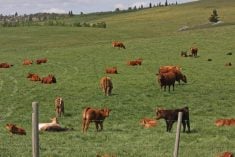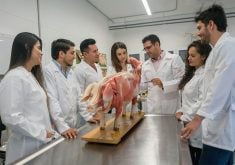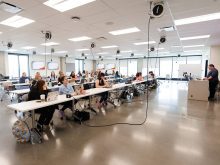Showing students how the real world works is the motivation for a communications class taught in some Saskatchewan rural schools.
“We believe strongly in authentic learning,” says Jim McLeod of the province’s education department, who helped set up the program last year.
Offered to selected schools, the course teaches teenagers how to be computerized journalists. It is offered only in rural schools that don’t have the same access or opportunities in electronic communication as urban areas.
The course teaches Grade 11 and 12 students how to do interviews, write stories, take video and still photographs and produce material in a printed newsletter or website form.
Read Also

Fuel rebate rule change will affect taxes and AgriStability
The federal government recently announced updates to the fuel rebates that farmers have been receiving since 2019-20.
“The actual technical skills aren’t as rigorous as assumed,” McLeod said.
About 100 rural students have taken the course in the last two years.
Now, two classes will get the ultimate test. They have been asked to create printed and electronic versions of a newsletter during two education conferences this spring.
Colonsay School is in charge of the newsletter for delegates to a middle years conference in late March and Bjorkdale School is handling the twice-a-day newsletter for a national conference on rural education planned for early April.
McLeod said this is the second time the rural congress has had students doing news for the delegates.
The students will work long hours under the supervision of their teacher and education technology officials. They will be in a room near the conference registration desk so delegates can watch them work.
After that “dynamic and exciting” project, McLeod hopes some of the students will try journalism as a career.
Bjorkdale English teacher Kenton Letkeman said he is learning as much as his 20 students.
He said they will find the conference newsletter experience “a real confidence booster. They’ll realize they can do something different. They can reach for higher goals.”
The students work in teams of four – researching, writing, editing and publishing. Students will rotate through all the jobs.
Letkeman said Bjorkdale was lucky to be picked as one of the schools teaching the e-journalism course.
“We’d like to have it next year. It depends on whether they ask us to.”














